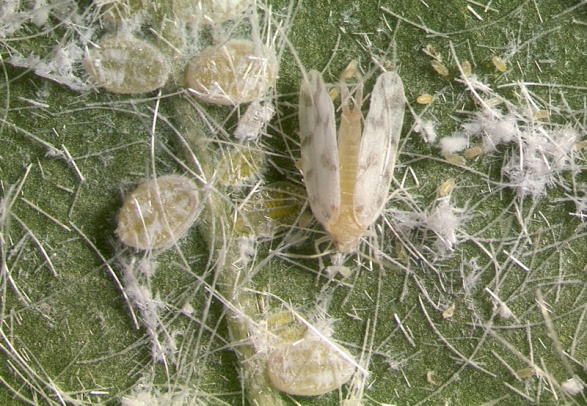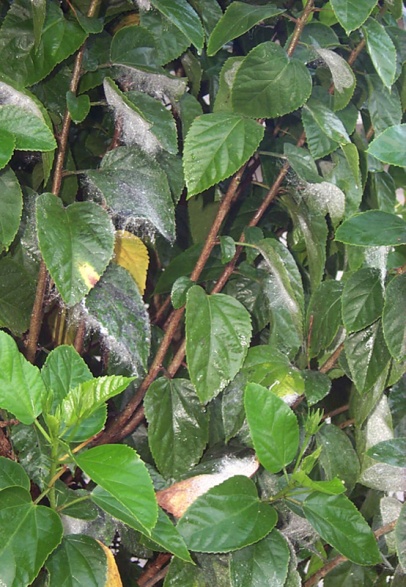
Giant whitefly
Aleurodicus dugesii Cockerell
(Insecta: Hemiptera: Aleyrodidae)
Adults are about 3 mm long — three times larger than adults of other whitefly species — with yellow bodies and white wings that bear irregular, grayish-brown spots. Nymphs have yellowish, semi-translucent, flat, oval bodies. Third and fourth instars secrete long, wax filaments.
Under Florida summer conditions, the life cycle is completed in 35 days. Females lay eggs in a spiral pattern on the underside of leaves and cover them with wax. Hatching nymphs settle within the spiral and develop through four instars. Adults then emerge from the so-called pupal skin of fourth instars and congregate nearby to feed and reproduce.
Native to Mexico, Aleurodicus dugesii has been introduced to the United States in the 1990s and now is an invasive pest in California, Florida, Hawaii, Louisiana and Texas.
The preferred host of giant whitefly in Florida is hibiscus, but suitable host plants include many ornamental plants, altogether about 200 plant species from 35 families. As sap feeders, nymphs and adults excrete large amounts of honeydew giving rise to black sooty mold.
Images
To
save the Web-optimized images shown below to your hard drive:
PC users: right click to "Save Picture (or Image) As..."
Mac users: click and drag to your desktop.

Adult (center), nymphs (left), and eggs (right) of giant whitefly, Aleurodicus dugesii Cockerell
(Photographer: Lyle Buss, University of Florida)

Infestation of hibiscus by giant whitefly, Aleurodicus dugesii Cockerell
(Photographer: Lyle Buss, University of Florida)